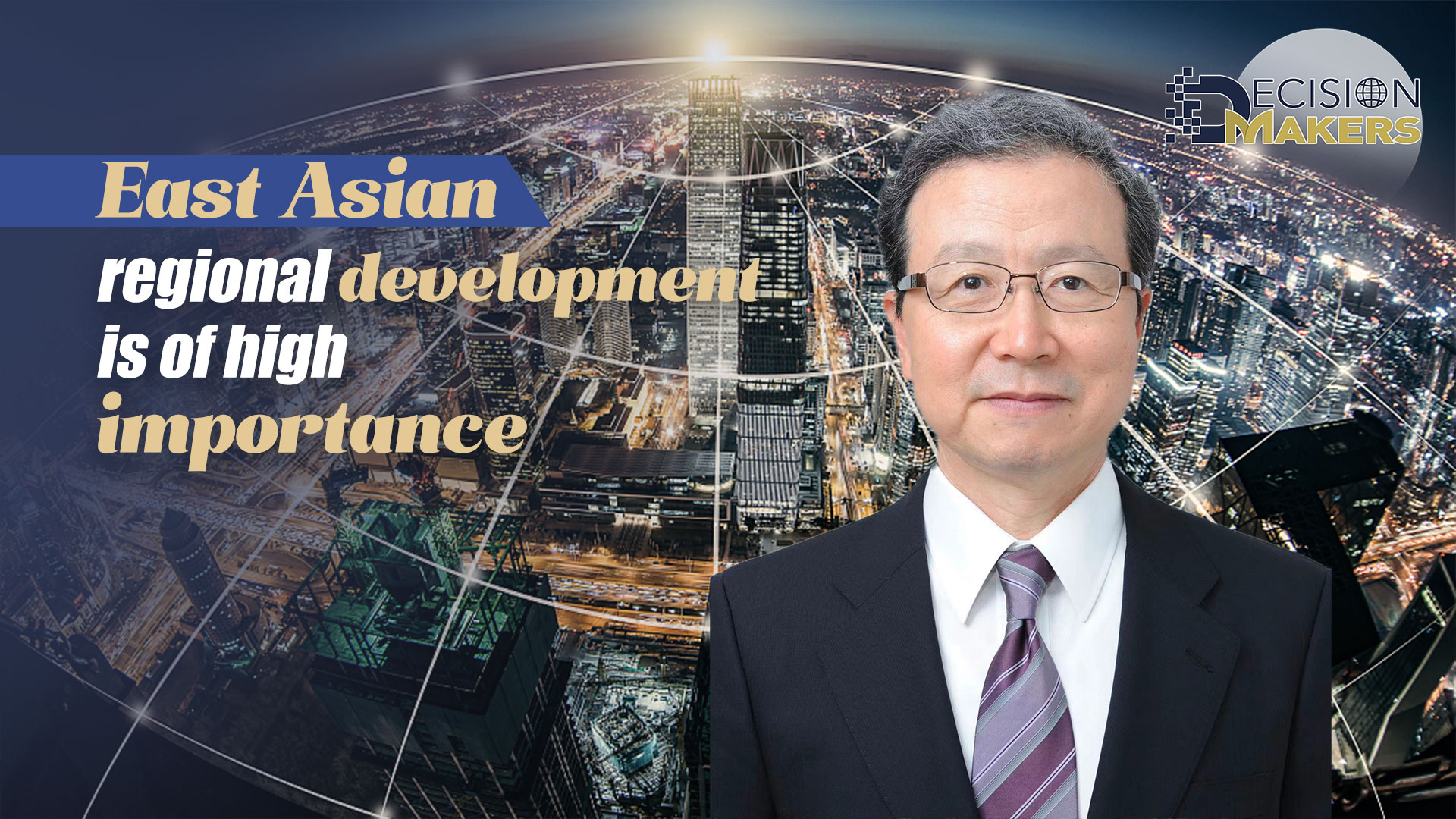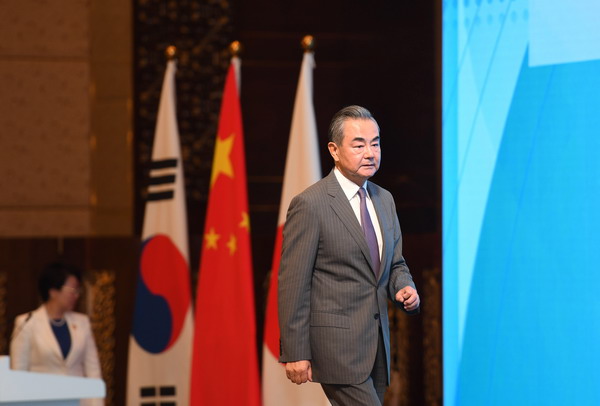
Editor's note: Decision Makers is a global platform for decision makers to share their insights on events shaping today's world. Cheng Yonghua is the Executive Vice President of China-Japan Friendship Association and former Chinese ambassador to Japan. The article reflects the author's opinions and not necessarily the views of CGTN.
"The trilateral cooperation among China, Japan and South Korea has grown from scratch, from small to large over the past two decades," Wang Yi, director of the Office of the Foreign Affairs Commission of the Communist Party of China (CPC) Central Committee and a member of the Political Bureau of the CPC Central Committee, said at the 2023 International Forum for Trilateral Cooperation in Qingdao, east China's Shandong Province, on July 3. Asian countries should "practice open regionalism, not be coerced by bullying and hegemony, and take the destiny of their own country and the region into their own hands," Wang added.
As the former Chinese ambassador to Japan, I have ample experience in East and Southeast Asia and would like to offer four insights for a better understanding of the history, background, mode, status, and future of Asian economic cooperation, trade, and foreign relations.
First, Asian trade and cooperation is not only important for the regional development but also for the global economy and international situation. In the face of recent worldwide challenges such as the pandemic and anti-globalization, East Asia has tackled them in stride, while the United States and Europe have encountered collaboration difficulties and marked economic slowdowns.
Regarding the pandemic, the strong recovery of Asian societies and economies in dealing with COVID-19 is also inspiring. As for anti-globalization, while the United States has increasingly withdrawn from collaboration, initiatives in East Asia, such as the Regional Comprehensive Economic Partnership (RCEP), have been put forth even during the aforementioned global crises.
Besides, the economic structures in individual East Asian economies, particularly between China and the Republic of Korea (ROK), are complementary, allowing deep integration between the two systems and consequently securing the free trade agreements (FTA), which are extremely important in promoting high trade volumes. This is despite FTA progress between the three countries being stalled in recent years.
Although China certainly takes the lead among the three nations combined, they recognize the weight they carry. The total GDP of China, Japan, and the ROK combined accounts for approximately 20 percent of the global GDP, and among the RCEP member countries, 80 percent. These nations mutually recognize the advantages of their cooperation as the driving powerhouse of East Asian growth.

Wang Yi attends the opening ceremony of the 2023 International Forum for Trilateral Cooperation in Qingdao, east China's Shandong Province, July 3, 2023. /Chinese Foreign Ministry
Wang Yi attends the opening ceremony of the 2023 International Forum for Trilateral Cooperation in Qingdao, east China's Shandong Province, July 3, 2023. /Chinese Foreign Ministry
The third point was the long-term historical and cultural links between China and East and Southeast Asia that mark the basis of fruitful East-Southeast Asian collaboration. Chinese influence in the region can be traced as far back as the Han and Tang dynasties. With about 2000 years of intercultural interactions underway, similarities are abundant such as the integrated usage of Chinese characters (hanzi) or the widespread influence of Confucian teachings to cultures and countries like Japan, the ROK, the Democratic People's Republic of Korea (DPRK), Vietnam, Singapore, and Malaysia.
With this background, fittingly, China is one of the trade and cooperation leaders in the ASEAN region, mutually ranking each other's largest trading partners for the past three years. The 2022 trade volume alone between China and ASEAN nations was 6.52 trillion yuan ($943 billion), up by 15 percent year-on-year. Data and statistics like this result from effective regional cooperation mechanisms, such as the ASEAN-China Free Trade Area, which has become the world's third-largest free trade area, or the China-ASEAN (10+1) Cooperation Mechanism.
In the Asian context, for both East Asia and Southeast Asia, this dependency is not seen negatively; instead, promoting mutual development, in turn, helps each country and contributes to the general growth of the world economy as well as East Asia's growing importance in it.
Finally, East and Southeast Asia tend to be preying zones for global powers to assert their soft power. However, nations should abandon their "new Cold War" mentality toward participation in East Asia and instead promote sustainable development in the region. Global challenges such as weak economic recovery, the tendency for decoupling and breaking ties, production and supply chain tensions, and energy, food, and finance issues have put the world on edge, causing more and more nations to tend towards protectionist measures and "picking sides."
However, promoting cooperation in East Asia and Southeast Asia over recent years, these regions have proven that maintaining stability and promoting open multilateral integrated sustainable development will generate long-term benefits for all involved.
To inspire East Asia's "dynamism," it's time to relinquish the outdated perception of the West dominating the global economy in the three-tiered structure system of the United States leading, Europe following, and Asia falling behind. Instead, a more nuanced understanding that recognizes East Asia as one of the three major global trade centers, a significant contributor to new economic growth, and a key player in the worldwide manufacturing system is not only more representative of the 21st century global economic reality but also models successful partnership mechanisms for the rest of the world to follow.
Special thanks to Peking University's Yenching Global Symposium and the assistance of Caitlin Tierney.
(If you want to contribute and have specific expertise, please contact us at opinions@cgtn.com. Follow @thouse_opinions on Twitter to discover the latest commentaries in the CGTN Opinion Section.)